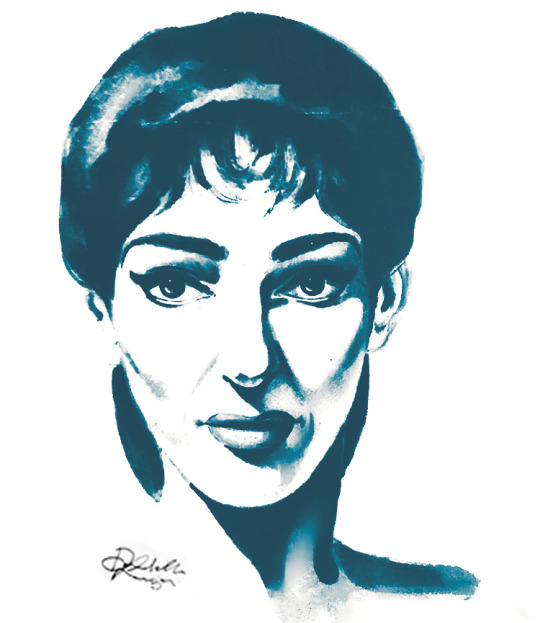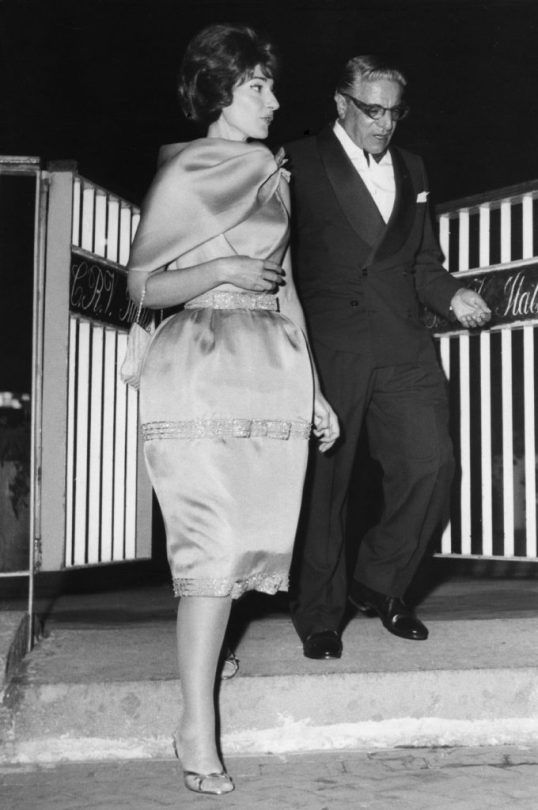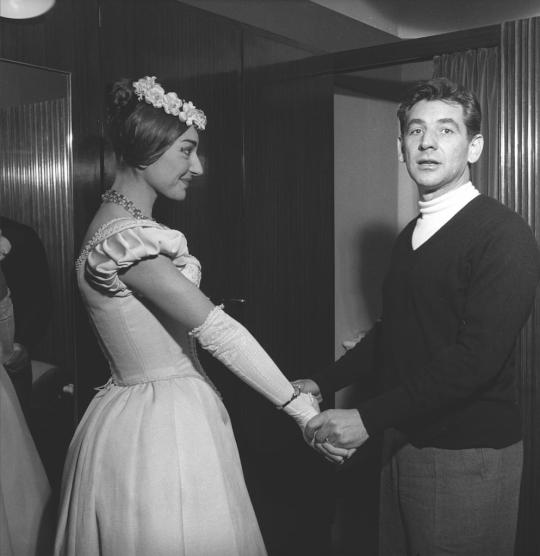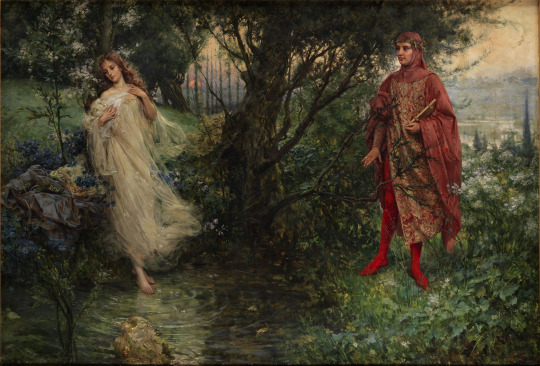#la divina
Photo

Maria Callas in her dressing room at the Metropolitan Opera House, November 1956
#tosca#maria callas#diva#opera#metropolitan opera#the met#new york 1950s#crown#puccini#vissi darte#la divina#callas#black and white#photography#costume
661 notes
·
View notes
Text

Teresa Berganza on Maria Callas (Opera Now magazine)
27 notes
·
View notes
Text
Happy Centennial to La Divina!
December 2, 1923 was a blessed day for that was the day Maria Callas was born. Unmatched as an operatic diva, on and off stage, we are so fortunate to have many of her recordings to remind us of what we lost and for new generations of opera lovers to discover and become entranced with.
And now, the impossible task of picking my own personal top 5 Maria Callas roles.
5. Elvira (in Bellini's I Puritani)

Callas singlehandedly revived the bel canto repertoire and brought Bellini's operas (most not performed since the 19th century) back to the fore. Of all the operas in which La Divina got to excel in mad scenes, I chose this one because essentially the entire opera is one long mad scene for her character - Elvira - a young, Puritan girl who thinks that her beloved has abandoned her on the day of their wedding. Callas somehow finds an entire theatrical range of heartbreaks in this performance, and doesn't stop breaking your heart until the last (surprisingly happy) note of the opera.
Recommended: I would invest in the 1953 EMI studio recording with Giuseppe di Steffano and Rolando Panerai. But while I was fucking around, I also found this 1952 live recording from Mexico, that I'm excited to check out.
4. Leonora (in Verdi's Il Trovatore)

Callas was so famous for singing Verdi heroines, that it is almost impossible to chose one above others. I'm going to buck the trend and NOT choose Violeta from La Traviata, because that would be too easy. After all, Violeta is the focal point of La Traviata, and history has proven again and again that the public is wild for a consumptive courtesan. In contrast, Leonora is perfectly privileged and healthy, she is a lady in waiting to the Spanish Queen, whose one misfortune in life happens to be her questionable taste in men (as is often the case in Verdi's operas). Il Trovatore is known to be a vehicle for the tenor, but a good Leonora can steal the opera from under him, especially in the final act, and Maria Callas easily does just that.
Recommended: EMI's 1956 recording with di Steffano, Barbieri, and Panerai is really to die for. I have no notes! Here's a tasty snack to sample.
3. Medea (in Cherubini's Medea)

Some roles are so mythic that you need someone approaching demigodhood in order to pay them proper homage. Medea may have been a controversial figure in Greek mythology, but also an absolute badass and a powerful sorceress not to be fucked with. Callas imbued her with all the righteous rage that fueled her, but also with a keen humanity and vulnerability. I dare you to listen to any of her Medea recordings and not to come out of the experience rooting for those babies to be stabbed all the way dead. Hahahah just kidding. (Or am I?)
Recommended: Any of her studio or live recordings of Medea are great, but do yourselves a favor and listen to this 1953 LIVE recording conducted by Leonard Bernstein (yes that Bernstein). You will get the chills, I swear to all the gods. HER POWER!!!!
2. Tosca (in Puccini's Tosca)

This was my first complete opera recording that I purchased for what would later accidentally turn into my Maria Callas collection. I have listened to it more times than I care to admit, but in my defense, it was life changing. The way that Callas spits "ASSASSINO!!!" into Scarpia's face during the Act II torture scene. *chef's kiss* I get goosebumps to this day. The recording in question was was 1965, very late in her career, and by some accounts not when she was in her "best voice". But the sheer power of her artistry, the maturity with which every line is sung and acted, her understanding of the character far exceeds her early career interpretations of the same heroine. This was the Callas I fell in love with - the woman who made me realize opera could be about so much more than pretty singing.
Recommended: Lucky you, here's the full 1965 studio recording with Carlo Bergonzi and Tito Gobi. There are some live recordings available now on Youtube from the same year! But if you're looking for a "prettier" sounding Tosca, there's always her 1953 studio recording.
Norma (in Bellini's Norma)

Haha, how predictable, you might say, but listen - why fuck with perfection? Has anyone since her been able to come anywhere even close in this role? Some big names have tried. Some big names never even got the cojones to try. Some have flirted with recording the famous Casta Diva aria alone. But listen - she was incomparable, show stopping, life changing. When I listen to her sing Norma, I feel like I know what it's like to be in the presence of God.
Recommended: Do yourselves a favor and get the 1955 EMI studio recording. Although really any recording of her singing Casta Diva will make you see angels/fairies/unicorns if you haven't already.
24 notes
·
View notes
Text
and of course, happy ONE HUNDREDTH birthday to La Divina herself!!!
16 notes
·
View notes
Text
youtube
Maria Callas is 100 today, this is Suicidio! from La Giocanda. The divine of the divine. Happy birthday, La Divina.
#maria callas#la divina#la gioconda#amilcare ponchielli#the chest voice!#the full bodied groans of pain!#the tenderness#HOW DOES IT STILL MANAGE TO BE TENDER?#she is and will always be peerless#opera tag
14 notes
·
View notes
Text
Ritratti di Donna: Maria Callas
A cura di Donatella Lavizzari

E poi c’è Lei, la Divina, Maria Callas. Il suo bel canto lascia il posto alla drammatizzazione del dolore espresso per mezzo del palcoscenico nel mondo reale.
Per la critica Maria Callas è una soprano che si trasfigura nei personaggi.
In “Vissi d’arte” del secondo atto della Tosca di Puccini, nella pronuncia del ‘perché’ in ‘perché me ne remuneri’ si percepisce il suo pianto interno, si sente la veridicità del singhiozzare.
Lei non interpreta quest’ultima aria, non recita come fanno le altre, lei la vive.
youtube

La sua vita è costellata di grandi fortune e celebrità ma anche di tragedie. Nel 1960 rimane incinta di un figlio non voluto dal magnate Aristotele Onassis e il bimbo respira solo per poche ore.
Un dolore straziante a cui seguirà presto quello del tradimento.
Dopo anni d’attesa per questo amore estremo, la Callas viene a conoscenza, tramite i quotidiani, che Onassis avrebbe sposato Jacqueline Kennedy, vedova del Presidente americano.
Quando il magnate, pentito della sua scelta rivelatasi sbagliata, riprovò a contattarla, la Callas gli diede una risposta esemplare: ‘in me vive l’Antica Grecia, lascia che io viva con me stessa questa tragedia’.

PER MARIA CALLAS
Maria Callas, nome d’arte di Anna Maria Cecilia Sophia Kalogheròpoulos (New York, 2 dicembre 1923 – Parigi, 16 settembre 1977), è stata consacrata un mito del teatro dell’opera. Un mito, che si è consolidato negli anni della sua carriera artistica, e che si era affermato, improvvisamente, all’Arena di Verona, nella stagione lirica del 1947, nelle vesti di protagonista dell’opera Gioconda di Amilcare Ponchielli.
La sua voce è rimasta ancora oggi un punto di riferimento nel mondo della lirica, al pari della sua interpretazione musicale.
Ma sul palcoscenico era soprattutto la sua arte scenica che colpiva il pubblico, la sua scultorea gestualità, sospesa fra modernità e classicismo, la sua potente espressione mimica.
Il tutto retto ed alimentato da una fortissima personalità, generosa di slanci passionali, che non amava le mezze misure.
Proprio da questi tratti nasce il grande personaggio, che ha fuso carriera artistica e vita privata, in un susseguirsi di colpi ad effetto.
Della Callas sono rimasti dischi e qualche video che non potranno mai restituirci l’autenticità dell’artista, perché la Callas non andava solo ascoltata ma andava “vista”, bisognava essere coinvolti da quella presenza scenica di straordinaria efficacia.
Non esiste nessun mezzo artificiale o artificioso che possa rendere quello che un attore, quando è tale nel senso pieno del termine, sa e può dare davanti al pubblico ogni volta e ogni volta in modo diverso.
Non è con il breve filmato di Tosca che chi non l’ha mai vista possa comprendere quali e quante erano le sue sfumature, i suoi palpiti.
La Callas ha rimesso in luce il recitativo perché portava sillaba per sillaba, all’altezza dell’aria, comprendendo perfettamente il significato del recitativo belliniano, tra i più importanti e definitivi dell’Ottocento.
Poi c’era la Callas che dalla dolcissima cantilena del catanese, passava alle sue ire terribili.
Basti ricordare il “Trema fellon” della Norma che faceva davvero tremare chi l’ascoltava e la sua scultorea Medea che ha segnato una nuova era nell’arte del canto.
Vocalmente la sua tecnica era perfetta sia nell’accento che nel virtuosismo, degna allieva di Elvira Hidalgo.
Alla Scala arrivò riprendendo, nell’Aida, Renata Tebaldi nel 1950, poi riapparve, titolare del ruolo, per inaugurare la stagione 1951/52 con i Vespri Siciliani di Giuseppe Verdi. E in questa stessa stagione interpretò alla Scala un’opera che non era mai stata eseguita sul palcoscenico milanese: Il Ratto dal Serraglio di W.A.Mozart.
La “Divina” è stata indiscutibilmente la massima espressione del canto melodrammatico.
Per lei non esisteva una nota, una pausa, un respiro che fosse meno importante di un altro.
Raggiungeva scale cromatiche discendenti di rara perfezione vocale ed intonazione.
La notte tra il 15 e il 16 settembre 1977 si è spenta la stella di Maria Callas, ma, nonostante siano trascorsi più di quarant’anni, i suoi raggi artistici riscaldano ancora i cuori degli appassionati di lirica.
youtube
#maria callas#aristotle onassis#teatro alla scala#opera lirica#lirica#casta diva#elvira hidalgo#la divina#Vissi d'arte#musica#Youtube
2 notes
·
View notes
Text
listening to e che? io son medea by la divina while it's raining outside and cold morning air creeps in through curtains is an experience for sure
2 notes
·
View notes
Text

Maria Callas pictured at the Royal Opera House, Covent Garden, for a rehearsal, 1958
122 notes
·
View notes
Text
youtube
10 notes
·
View notes
Text
La divina. Maria Callas, la voce della passione - Michelle Marly - Giunti Editore
La divina. Maria Callas, la voce della passione – Michelle Marly
Giunti Editore
La donna dietro il mito. Una passione fatale. Il triangolo amoroso più celebre e tormentato di tutti i tempi.
Era stato il primo e l’unico a saper distinguere la sua persona dalla sua voce, a saper vedere Maria senza la Callas. Ti amo, pensò. Ora e per sempre
Venezia 1957. La Divina, la Diva Assoluta, la più grande…

View On WordPress
#Giunti Editore#La divina#la voce della passione#Maria Callas#Michelle Marly#Traduttore: Sofia Dilaghi
0 notes
Text

Dante and Beatrice, Salvatore Postiglione (1861-1906)
#art#art history#Salvatore Postiglione#literary painting#illustration#Divine Comedy#la divina commedia#Dante#Dante Alighieri#Dante and Beatrice#Beatrice Portinari#Realism#Realist art#Italian Realism#Italian art#19th century art#oil on canvas
2K notes
·
View notes
Text
Happy birthday, Maria.
youtube
1 note
·
View note


